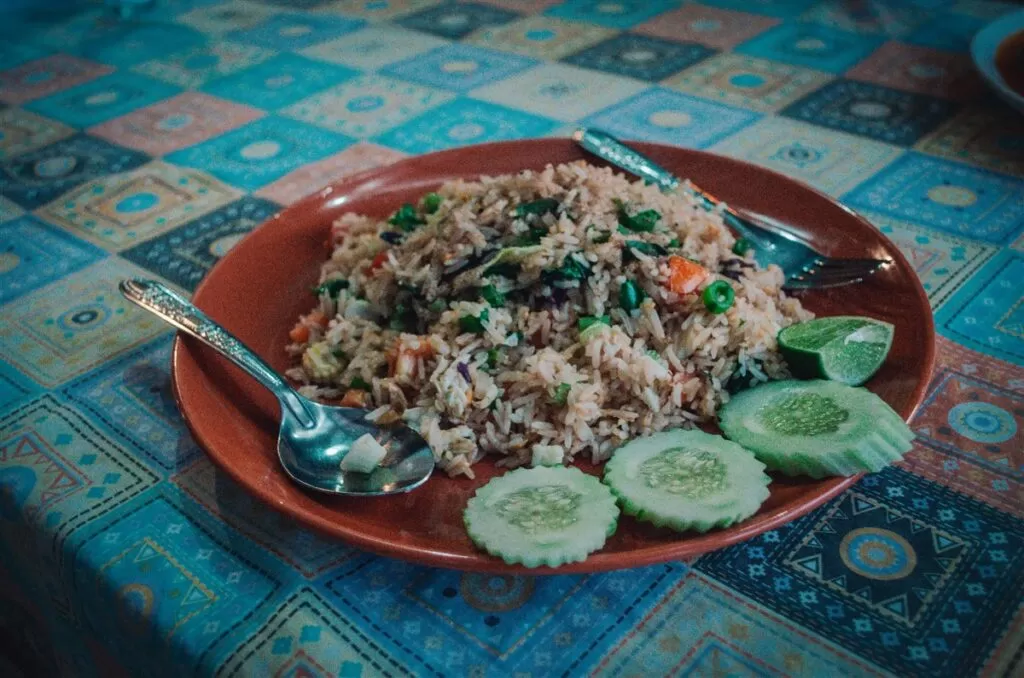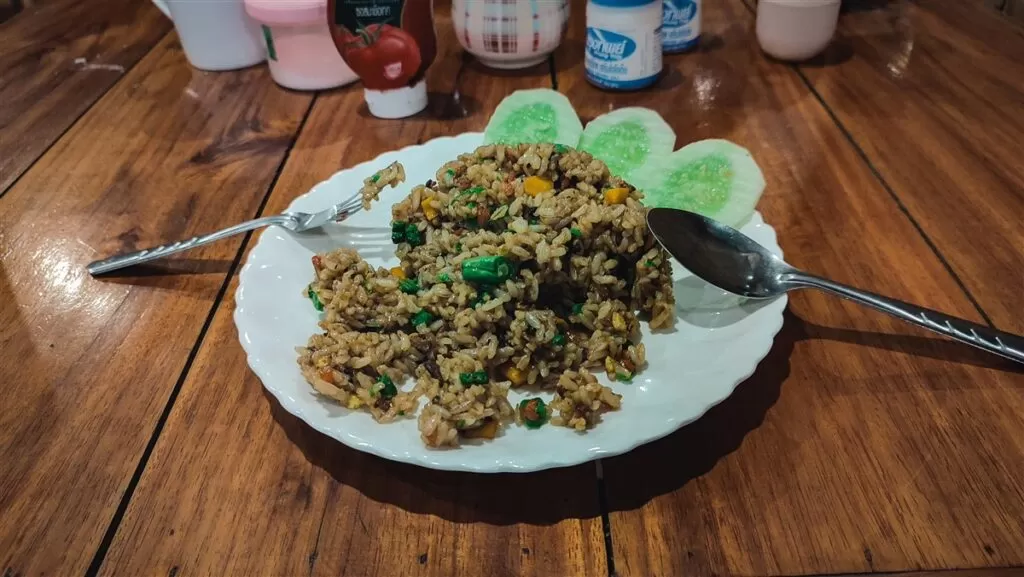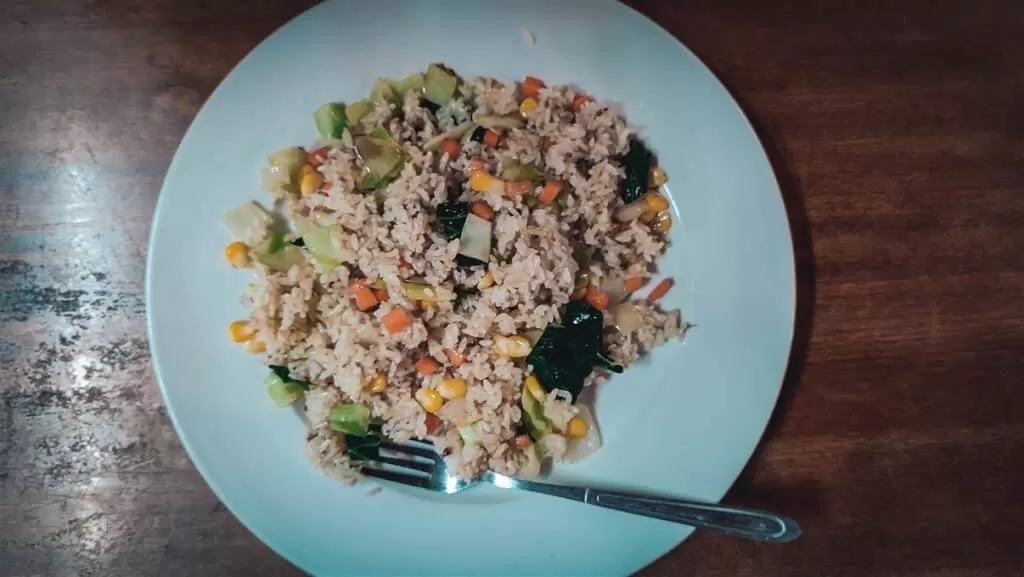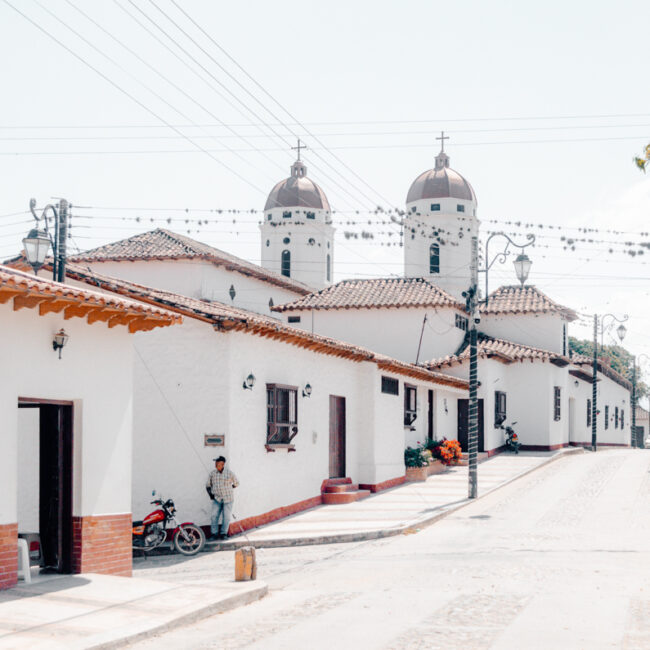

Maybe you are going to an Asian restaurant or traveling to Asia in the near future. Great! Fried rice is a popular dish on every menu whether you’re visiting an Asian restaurant in your home country or a local restaurant when traveling to Thailand, Vietnam, or Malaysia. Vegetable fried rice seems suitable for vegans at first glance. But is fried rice vegan-friendly? Read this post with everything you need to know!
The history of fried rice is rich and fascinating, with origins dating back thousands of years in China. It is believed that fried rice was first created as a way to use up leftover rice, making it both economical and practical. Over time, it has evolved into a popular dish enjoyed in various forms across different cultures.
Fried rice can be traced back to ancient China, as early as the Sui Dynasty (589-618 AD) and Tang Dynasty (618-907 AD). During these times, cooks and household chefs started stir-frying rice with various ingredients, such as vegetables, meats, and seasonings.
One of the most well-known early versions of fried rice is “Yangzhou Fried Rice,” which originated in the city of Yangzhou during the Ming Dynasty (1368-1644 AD). It was prepared with a variety of ingredients, including diced ham, shrimp, eggs, and spring onions. Yangzhou Fried Rice became famous and spread to other regions, influencing the development of different regional variations.

Is fried rice vegan? This one on Koh Phayam in Thailand was vegan!
As trade and cultural exchange flourished along the Silk Road and other trade routes, fried rice spread to other parts of Asia. It reached neighboring countries like Japan, Korea, and Vietnam, where it adapted to local tastes and ingredients. In Japan, for example, “Chahan” (Japanese fried rice) became a popular dish.
With the globalization of cuisine and the movement of people around the world, fried rice found its way into various international cuisines. Chinese immigrants played a significant role in introducing fried rice to different parts of the world, including North America, Europe, and Africa.
As fried rice became more widespread, different regions developed their own unique variations. For example, in Thailand, “Khao Pad” is a popular fried rice dish that often includes fish sauce, chili, and basil, giving it a distinct Thai flavor. In Indonesia, “Nasi Goreng” is a fried rice dish that typically includes sweet soy sauce, shallots, garlic, and shrimp paste.
As you can probably deduce from the text above, the answer is: sometimes. It highly depends on which country in Asia you are visiting or at which restaurant you are eating.
The most common ingredients in fried rice vary depending on regional variations and personal preferences. However, there are some key ingredients that are often found in traditional fried rice recipes. Here are the most common ones:
The primary ingredient, typically leftover white rice, is crucial for making fried rice. The rice should be chilled before frying to ensure a firmer texture and prevent it from becoming mushy.
Common vegetables used in fried rice include diced onions, carrots, peas, corn, bell peppers, broccoli, bean sprouts, and green onions. These vegetables add color, texture, and flavor to the dish.
Beaten eggs are often scrambled and added to fried rice. Sometimes the eggs get fried into an omelet and are put on top of the fried rice.
Various proteins can be used, such as diced chicken, shrimp, pork, beef, or tofu. Some regional variations also include cured meats like Chinese sausages or ham.
These aromatic ingredients add depth of flavor and are often sautéed in oil before adding the rice and other ingredients.
This savory and salty sauce is a fundamental seasoning in fried rice. It not only adds flavor but also gives the rice its characteristic brown color.
Depending on the regional variation, oyster sauce or fish sauce might be used to enhance the umami and overall taste of the dish.
A small amount of sesame oil is sometimes added at the end of cooking to add a rich nutty flavor.
Typically vegetable oil or another neutral oil is used for stir-frying the ingredients in a large wok. You can be sure of it for 99% that this will be a vegan oil.
Basic seasonings help to balance the flavors of the dish. Pepper is often added and in Thailand and (vegan) Maggi sauce has become a thing in the country.

Vegan in Laos: Fried rice with vegetables in Nong Khiaw
Depending on which region in Asia you are visiting, fried rice can be naturally vegan or not. No matter where you are traveling to or which restaurant you are visiting, it’s better to always ask to be sure.
In a lot of the most popular Asian countries like Vietnam, Thailand, and Indonesia menus clearly indicate which ingredients are added to the fried rice.
It often splits the variations into vegetable fried rice, vegetable fried rice with egg, and chicken fried rice. Evidently, as a vegan and conscious traveler, you’ll go for the vegetable fried rice.
At this point, however, you still have to be careful that no hidden non-vegan condiments like fish sauce, which is very common in Vietnam, or shrimp paste, often used in Thailand, or added to the stir-fry.
The best way to ask for vegan fried rice in Asian countries is to list the possible hidden non-vegan ingredients and put them through Google Translate.
To make it easy for you, here are the common hidden non-vegan ingredients that you will find in friend rice across Asia:
Even though it’s not mentioned on the menu, most of the time, restaurant owners will be open to extra vegetables to your fried rice or include tofu. The use of tempeh is also very common in Indonesia.
That way you won’t lack protein!

To finish this post, here are the answers to some commonly asked questions on the web concerning the query if fried rice is vegan:
Yes, fried rice commonly includes eggs as one of its key ingredients. They can be scrambled and mixed with the rice or put on top sunny side up or as an omelet. Nevertheless, menus usually make a clear distinction between fried rice with vegetables and fried rice with egg.
Yes, as a vegan, you can eat any type of rice. Rice is a plant-based food, and it is suitable for a vegan diet. White rice is the most commonly used type of rice to prepare fried rice, with the outer husk, bran, and germ removed.
Traditional Chinese fried rice often includes eggs as one of the key ingredients, which makes it non-vegan. However, Chinese cuisine is incredibly diverse, and many restaurants offer vegan versions of fried rice. Be sure to enquire about non-vegan sauces though.
Thai fried rice can be made vegan, but it depends on the specific recipe and the ingredients used by the cook or restaurant. Traditional Thai fried rice, known as “Khao Pad” in Thai, often includes eggs and sometimes meat or seafood as well.
However, like Chinese fried rice, it can be easily adapted to a vegan version by omitting animal products and using plant-based ingredients.
Popular sauces to replace fish sauce and non-vegan condiments in Thailand are plant-based Maggi sauce and mushroom sauce.
As I mentioned before, vegetable fried rice may seem vegan at first glance but it is still important to ask about hidden condiments like fish sauce, oyster sauce, and shrimp paste.
Pineapple fried rice can be found throughout Thailand and might seem vegan. Unfortunately, it is not because it is often paired with shrimp and includes fish sauce most of the time.
You can however ask them to exclude and replace these ingredients with tofu and another vegan flavor enhancer.
There you go! I hope this post has shed some clarity for you about the fact if whether or not fried rice is vegan.
Here is also a great recipe for vegan Thai basil fried rice to try at home!
Let me know in the comments below if you have any questions or drop me a message through my contact page.
Also, don’t forget to check out my resources page with my favorite booking platforms and tips to start planning your trip. Additionally, have a look at my favorite travel gear if you want to pack more consciously!
ENJOY!
Disclaimer: This post may include affiliate links. If you click on them, I may receive a commission at no extra cost to you.

Hi! I am Annelies and this is Travelers & Dreamers, a blog about conscious travel which means traveling in a more mindful way, with a positive impact on the world and yourself!
On this website, I cover different topics like slow travel, plant-based food guides, responsible travel, sustainable packing, eco-travel, and more!
Latest Posts

15 Best Things to Do in Nong Khiaw, Laos (2024)

Santa Rita, Salento: All You Need to Know

La Playa de Belen, Colombia: An Easy Travel guide!

How to Visit the Pescaderito in Curiti (Near San Gil)

Los Estoraques Unique Natural Area: An Easy Travel Guide
Do you want to receive my latest finds on conscious and sustainable travel directly to your inbox? Subscribe here!
© COPYRIGHT TRAVELERS&DREAMERS, 2023.